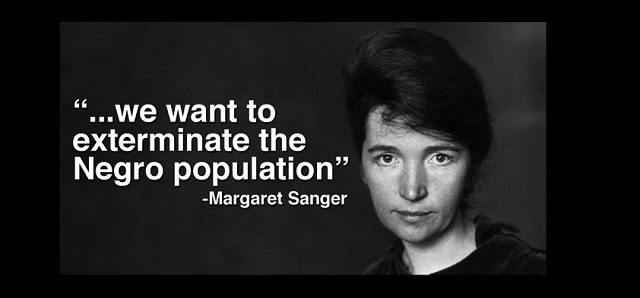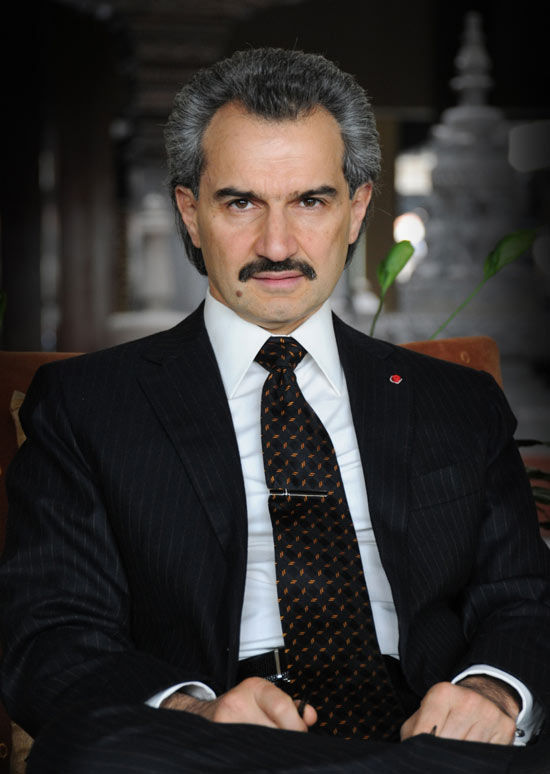On the morning of October 19, 1927, the Commonwealth of Virginia sterilized Carrie Buck.
Dr. John Bell — whose name would forever be linked with Carrie’s in the Supreme Court case Buck v. Bell — cut her open and removed a section from each of her Fallopian tubes. In his notes, Dr. Bell noted that “this was the first case operated on under the sterilization law.”
Carrie Buck was an average, unassuming girl who grew up around Charlottesville. She wasn’t very smart, but she wasn’t dumb either. She didn’t come from the best circumstances, but she did the best with what she had.
Pictures show a plain young woman with short, dark hair, bobbed in the fashion of the time. In one photo, taken by Arthur Estabrook, an “expert” in eugenics whose testimony would help seal her fate, Carrie sits on a bench with her mother Emma at the Virginia State Colony for Epileptics and Feeble-minded, where both were institutionalized.
Estabrook’s photo of Carrie and Emma was taken on November 17th, 1924, the day before Carrie’s trial began. Estabrook had come to visit Carrie and Emma at the urging of Dr. Albert Priddy, the superintendent of the Virginia Colony.
Priddy was building a case against Carrie, a case for her forced sterilization, and he needed a purported expert in the “science” of “inferior genetics” — a.k.a. eugenics — to testify that Carrie, her mother, and Carrie’s six-month-old daughter Vivian were all congenitally and irredeemably “feeble-minded.”
 In a different time, Estabrook, with his neatly parted hair and defined features, could have become a well-known character actor, a face “in all those movies.” But Estabrook was employed at the Eugenics Record Office in Cold Spring Harbor, New York, and he was more than prepared to testify to the inferiority of Carrie and her bloodline. Most of his life had been devoted to diagnosing and describing “defective bloodlines” that, in his view, held humanity back.
In a different time, Estabrook, with his neatly parted hair and defined features, could have become a well-known character actor, a face “in all those movies.” But Estabrook was employed at the Eugenics Record Office in Cold Spring Harbor, New York, and he was more than prepared to testify to the inferiority of Carrie and her bloodline. Most of his life had been devoted to diagnosing and describing “defective bloodlines” that, in his view, held humanity back.
At the urging of Aubrey Strode, the lawyer for Dr. Priddy and the Virginia State Colony, Estabrook rushed down to Lynchburg to testify against Carrie. Strode believed that the testimony of a true expert in eugenics would be crucial to developing an unassailable legal record proving that Carrie, Emma, and Vivian all carried defective genes and, therefore, that the state had both the authority and the right to sterilize Carrie to prevent any further “feeble-minded” offspring.
He needed such expert testimony if the appellate courts, and possibly even the US Supreme Court, were going to uphold Carrie’s sterilization and thus ratify not only Dr. Priddy’s plans for the mass sterilization of “genetic defectives,” but also the plans of thousands of similar eugenicists around the country. Eugenics was Estabrook’s life work, so of course he came as quickly as he could.
It only took Estabrook a short time to be convinced that Carrie and Emma were hereditarily “feeble-minded.” In the picture he took, Carrie and Emma stare distantly at Estabrook’s camera, seemingly not too happy to have been interrogated by someone who presumed they were imbeciles from the outset.

Carrie and Emma Buck, taken by Arthur Estabrook, Nov. 17, 1924. From eugenicsarchive.org.
We know Carrie’s story because her case eventually made it to the Supreme Court. But to the Commonwealth of Virginia in the 1920s, Carrie was just another congenitally “feeble-minded” woman who, in the parlance of the times, had a tainted “germ plasm” that would create generations of “socially inadequate defectives” if she were allowed to procreate freely. Carrie is the most famous of the (at least) 60,000 Americans who were forcibly sterilized in order to “cleanse the race” of undesirable genes.
The United States forcibly sterilized people through the 1970s. Many victims are still living. Virginia has apologized for its sterilization program, and, like North Carolina before it, voted to compensate still-living victims.
Yet, even today, many law professors seem to want to sweep Buck v. Bell under the rug. They’d rather talk about Lochner v. New York — when the Court overturned New York’s maximum work hour law as a violation of the liberty of contract — than Buck v. Bell. Judges are still said to be “Lochnerizing” when they are accused of legislating from the bench, but we don’t have a similar adjective form of Buck. Furthermore, because Lochner was overturned during the New Deal, its residual impact on our laws has been minimal. Buck v. Bell’s legacy is far bloodier.
Even for those familiar with the general facts of Buck v. Bell, Carrie’s story is worse than they realize. We now know that she was unknowingly a part of a plot to validate Virginia’s forced sterilization law, passed in 1924 to rid society of “idiocy, imbecility, feeble-mindedness or epilepsy.”
Even Carrie’s lawyer was a part of the plot, offering essentially no defense to the groundless claim that she was congenitally stupid. The simple — but far from stupid — girl from Charlottesville found herself at the center of what amounted to a conspiracy against her own reproductive future.
The judges and justices who ratified Carrie’s sterilization abdicated their responsibility to protect the weakest among us from the machinations of the powerful and the prejudices of the majority. Carrie needed protection from pseudoscience and groundless assertions, but all she got was an unquestioned seal of approval.
Instead of living out her unassuming life, Carrie became a poster-child for public policy run amok. This is the story of her case.
The “Feebleminded” Carrie Buck
Carrie Buck was born in Virginia on July 2, 1906, to Frank and Emma Buck. Her father was largely absent, and her mother apparently lived a hard life of odd jobs and persistent poverty.
As a result, Carrie spent much of her early life with her foster parents, John and Alice Dobbs.
When Carrie was 16, Clarence Garland, a visiting nephew of her foster family, sexually assaulted her. Years later, when Carrie was an old woman being interviewed by reporters, she would recall that Clarence “forced himself on me … he took advantage of me.”
Carrie became pregnant. Alice Dobbs now had a problem on her hands. Virginia society in the 1920s didn’t look kindly on illegitimate children, and Alice feared being burdened with a girl of “that type.” By squirreling her away with her mother at the Virginia State Colony in Lynchburg, the Dobbs family could be saved from disgrace.
C.D. Shackleford, the local Justice of the Peace, went over a standard commitment form with the Dobbses, featuring such bizarre questions as “does she take proper notice of things?” (answer: “No”), and “how was the peculiarity manifested?” (answer: “Peculiar actions”). He was told that Carrie was prone to “some hallucinations and some outbreaks of temper,” and that her pregnancy was proof enough of her “moral delinquency.” Additionally, two doctors also reported that Carrie was “feebleminded within the meaning of the law.” Satisfied, Shackleford ordered Carrie to be sent to the Colony.
But the Colony was not a place for a pregnant woman. Before being institutionalized, Carrie was allowed to have her baby on the outside. On March 28, 1924, Vivian Buck was born. Carrie was a mother for two weeks before she was sent away, leaving Vivian with the Dobbses.
Now known as the Central Virginia Training Center, the Colony sits just over the James River from downtown Lynchburg. The large, red brick “Mastin-Minor” building was built in 1913, and by the time Carrie came it housed approximately 800 inmates. Upon arrival, Dr. Priddy examined her and found no evidence of hallucinations or psychosis. He also found that Carrie could read and write, which is not surprising since she had had five years of school and been an average student.

The Virginia State Colony for Epileptics and the Feeble-minded. Photo courtesy of the Central Virginia Training Center.
In the Colony, Carrie was reunited with her mother. Colony records describe Emma Buck as a widow who “lacked moral sense and responsibility.” She had a reputation as “notoriously untruthful,” had been arrested for prostitution, and had allegedly given birth to illegitimate children. Perhaps most shockingly, her housework was “untidy.”
Emma was stamped with a diagnosis: “Mental Deficiency, Familial: Moron.”
The Eugenics Movement
The term “moron” is originally a “scientific” one, invented by Dr. Henry H. Goddard, a pioneer of the “science” of eugenics. His book, Feeble-Mindedness: Its Causes and Consequences, tried to classify and describe the attributes of those who are “incapable of performing his duties as a member of society in the position of life to which he was born.”
The feeble-minded were “ne’er do wells” who were “shiftless, incompetent, unsatisfactory and undesirable members of the community.” Goddard filled his book with pictures of his subjects, a supposed rogues gallery of the congenitally stupid.
Goddard created a taxonomy of the “feeble-minded.” “Idiots” were the lowest grade, with intelligence comparable to a child under two. Next, came “imbeciles,” those with intelligence comparable to a child from ages three to seven. Finally, came the “morons,” eight to ten.
It’s difficult to comprehend the extent of the popularity of eugenics during the first three decades of the twentieth century. According to one historian, eugenics ideas were integral to “the political vocabulary of virtually every significant modernizing force between the two world wars.” From marriage laws to immigration to schooling practices, eugenicists greatly influenced public policy — and in many ways, they continue to do so.
Eugenic goals were behind the Immigration Act of 1924, which created quotas for immigrants from Southern and Eastern Europe that remained in effect until 1965. Harry Laughlin, one of the doyens of the American eugenics movement and, like Arthur Estabrook, also of the Eugenics Record Office, testified to Congress that immigration restrictions were necessary to defend “against the contamination of American family stocks by alien hereditary degeneracy.” Like those who today call immigrants “rapists and murderers,” anti-immigrant rhetoric often carries shameful, eugenical tinge.
Carrie was prosecuted under the Racial Integrity Act of 1924, but the anti-miscegenation part of that law wouldn’t be struck down until 1967 in the landmark case of Loving v. Virginia. At the time of Loving, Virginia’s marriage license not only required the couple to be of the same race, but also that the couple affirm that “neither is she nor am I a habitual criminal, idiot, imbecile, hereditary epileptic, or insane person,” all words which reek of eugenics origins. Loving would later become an essential precedent to overturning same-sex marriage bans in 2015’s Obergefell v. Hodges.
In 1925, only a few months after Carrie’s first trial, the country was enamored with the famous Scopes “Monkey” Trial, when Tennessee schoolteacher John Scopes was put on trial for teaching evolution, famously dramatized in the 1960 movie (based off the 1955 play) Inherit the Wind. What’s remembered now as a valiant struggle of science over superstition was also a fight over an explicitly eugenics-favoring biology textbook.
Scopes used George Hunter’s A Civic Biology, which included such eugenics-promoting passages as:
If such people were lower animals, we would probably kill them off to prevent them from spreading. Humanity will not allow this, but we do have the remedy of separating the sexes in asylums or other places and in various ways preventing intermarriage and the possibilities of perpetuating such a low and degenerate race. Remedies of this sort have been tried successfully in Europe and are now meeting with success in this country.
Well into the later parts of the 20th century, eugenics-inspired laws left people sterilized, prohibited to marry, committed to state institutions, or barred from the country. Even presidents got on board. Woodrow Wilson was a fan. As governor of New Jersey he signed the state’s forced sterilization law, and Theodore Roosevelt once wrote that “society has no business to permit degenerates to reproduce their kind.”
The first US sterilization law was passed in Indiana in 1907. “Heredity plays a most important part in the transmission of crime, idiocy, and imbecility,” read the preamble, and therefore surgeons would have broad discretion to “perform such operation for the prevention of procreation as shall be decided safest and most effective.” Many states followed Indiana’s lead, including Virginia in 1924.
Dr. Albert Priddy of the Virginia State Colony for Epileptics and Feeble-minded could fairly be described as a zealot of eugenics. Prior to 1924, Priddy had performed hundreds of forced sterilizations by creatively interpreting laws which allowed surgery to benefit the “physical, mental or moral” condition of the inmates at the Colony. He would operate to relieve “chronic pelvic disorder” and, in the process, sterilize the women.
According to Priddy, the women he chose were “immoral” because of their “fondness for men,” their reputations for “promiscuity,” and their “over-sexed” and “man-crazy” tendencies. One sixteen-year-old girl was sterilized for her habit of “talking to the little boys.”
Dr. Albert Priddy, superintendent of the Virginia State Colony for Epileptics and the Feebleminded, from eugenicsarchive.org
But Priddy got himself into hot water when he forcibly sterilized Willie Mallory and her daughter Jessie. In September, 1916, Willie, Jessie and seven other Mallory children were arrested in their home on suspicion of running a brothel. In reality, Priddy had directed police to the Mallory house because he felt the family was a particularly egregious case of congenital feeble-mindedness and immorality. Priddy felt the “germ plasm” of the Mallorys needed to be purged, and the charges were entirely manufactured. Once in Priddy’s hands, Willie was declared “unable to control her nerves” and sterilized, as was her daughter Jessie.
George Mallory, the husband and father, had been out of town when the arrests were made. When he found out what had happened, he fought to get his family back and to prevent any further sterilizations. After a protracted legal battle, Willie and the Mallory children were freed.
Although the courts did not overturn the sterilization program, Priddy worried that it now rested on shaky legal foundations. What he needed was a new law and then a test case to validate it once and for all. And in order to prove his theory of hereditary feeble-mindedness to the highest court in the land, he would need at least three generations of verifiable “imbeciles.”

Notes from the Eugenics Records Office on Carrie’s alleged lineage. From eugenicsarchive.org.
The Trial
Carrie Buck found herself in the Colony in June of 1924, shortly before her 18th birthday. Priddy quickly made the connection between Emma and Carrie, and he knew about the recently born Vivian. He began building his case.
Designed to withstand legal challenge, the new Virginia law provided more due process than the previous ad hoc regime that rested entirely on official discretion. Carrie’s case first had to go before the Colony Board.
Priddy testified that Carrie was “congenitally and incurably defective” with a mental age of only nine, and that she had borne “one illegitimate mentally defective child.” The Board agreed that “Carrie Buck … is the probable potential parent of socially inadequate offspring,” and that sterilization would benefit both her and society at large.
What did Carrie think of all this? During the hearing before the Board, we have the only contemporaneous record of Carrie’s reaction to her unfortunate circumstance:
Q: Do you care to say anything about having this operation performed on you?
A: No, sir, I have not, it is up to my people.
In order to fully validate the law to Priddy’s satisfaction, the Board’s determination had to be defended in court. Thus, Irving Whitehead was appointed to “defend” Carrie from the Board’s ruling. Whitehead was not only a close friend of Priddy, but he was a former member of the Colony Board and, unsurprisingly, a staunch believer in forced sterilization.
In order to build an ironclad case against Carrie and her genes, Priddy needed to verify that Carrie’s daughter, the 8-month old Vivian, was also feeble-minded. Vivian’s mental status had been merely asserted before the Colony Board. Priddy knew the court would demand more.
Enter Arthur Estabrook, the recognized expert in eugenics from the Eugenics Record Office in Cold Spring Harbor, New York. Under questioning from Aubrey Strode, Estabrook explained how feeble-mindedness propagates due to “bad blood” and a “defective germ plasm” — “where two defectives’ germ plasms meet, the effect again appears.” Estabrook then gave his opinion of Carrie and Vivian:
Q: Did you give Carrie Buck any mental tests to determine her mental capacity?
A: Yes, sir. I talked to Carrie sufficiently so that with the record of the mental examination — yes, I did. I gave a sufficient examination so that I consider her feeble-minded.
Q: Have you a definition of “feeble-minded”?
A: Yes, I have.
Q: What is it?
A: A feeble-minded person is a person who is so weak mentally that he or she is unable to maintain himself or herself in the ordinary community at large.
Q: Now, what is a socially inadequate person?
A: That is anybody who by reason of any sort of defect or condition is unable to maintain themselves according to the accepted rules of society.
Q: From what you know of Carrie Buck, would you say that by the laws of heredity she is a feeble-minded person and the probable potential parent of socially inadequate offspring likewise afflicted?
A: I would.
The questioning turned to Vivian:
Q: Did you see Carrie Buck’s child?
A: I did.
Q: Were you able to form any judgment about that child?
A: I was.
Q: What is it?
A: I gave the child the regular mental test for a child of the age of six months, and judging from her reactions to the tests I gave her, I decided she was below the average for a child of eight months of age.
What is “the regular mental test” to determine if an 8-month old is feeble-minded? Easy, just wave a coin in front of her face and see if the infant’s eyes track it to a satisfactory degree. Vivian apparently failed that test.
Throughout Carrie’s trial, a succession of witnesses offered testimony that was hearsay, contentious, speculative, and simply absurd. Because Priddy and Strode felt it crucial to establish that Carrie’s entire family “stock” was defective, witnesses who had never met Carrie testified to rumors and anecdotes surrounding her and her family.
One witness, John W. Hopkins, the Superintendent of the Albemarle County Home, testified that he did not know Carrie, Emma, or Vivian, but he did have this probing insight to offer about Carrie’s half-brother:
Q: Do you know Roy Smith, a half-brother of Carrie Buck here?
A: Yes, sir
Q: What do you know about him?
A: Well, all I know, I have just seen him passing through the place back and forth. That is the extent of my acquaintance with him.
Q: But you haven’t told us anything yet that you know about him. You say you have seen him passing through the place: do you know anything about him?
A: I don’t know anything particular about him. I think he is rather an unusual boy.
Q: In what way?
A: He struck me as being right peculiar.
Q: He is a peculiar boy?
A: I think so.
Q: Now, why can’t you tell us what you know about him?
A: Well, the only thing I know that could cause me to have an opinion about him at all is, he came through the place one day — he was going to school. He stopped and was waiting on the path, and I asked him who he was waiting for. He said he was waiting on some other children, they was going home to spend the night with him. I said: “Boy, those children have gone home,” and he said well, they was coming with him tomorrow night. He had been standing there waiting I suppose twenty or thirty minutes.
The trial goes on in that fashion, with various residents of Charlottesville testifying that Carrie’s siblings, half siblings and other family members were “right peculiar” in some way.
One of the few witnesses to testify with first-hand knowledge of Carrie, a nurse from Charlottesville who had intermittent contact with Carrie over the years, recalled that in grammar school Carrie had been caught writing notes to boys. Priddy, of course, had once sterilized a girl for that transgression. For his testimony, Priddy felt the need to point out that Carrie had a “rather badly formed face.”
 Carrie’s lawyer offered essentially no defense. Not only did he call no witnesses, but Irving Whitehead did not challenge the prosecution’s witnesses’ lack of firsthand knowledge or their dodgy scientific claims. He did not even call Carrie’s teachers, who could have proven, with documented evidence, that Carrie had been an average student, including one teacher who wrote that Carrie was “very good” at “deportment and lessons.”
Carrie’s lawyer offered essentially no defense. Not only did he call no witnesses, but Irving Whitehead did not challenge the prosecution’s witnesses’ lack of firsthand knowledge or their dodgy scientific claims. He did not even call Carrie’s teachers, who could have proven, with documented evidence, that Carrie had been an average student, including one teacher who wrote that Carrie was “very good” at “deportment and lessons.”
Instead, it seemed that Whitehead was often testifying against his own client, taking it for granted that she was of “low caliber.” He did not challenge the claim that Carrie was illegitimate, which was false as a matter of Virginia state law because Carrie’s parents were married at the time of her birth. Nor did he argue that Carrie’s supposed “immorality” and Vivian’s illegitimacy were due to a rape by the Dobbs’ nephew, Clarence Garland.
Why would he? After all, Whitehead served 14 years on the Colony’s Board and had always supported Priddy’s devotion to sterilization. In fact, only a few months before Carrie’s trial, the Colony named a building after him.
Buck v. Bell
Carrie lost in the trial court. On appeal, Whitehead offered a 5-page brief to the state’s 40-pager, and Carrie lost there too. Her only recourse was to the US Supreme Court, but that was merely an illusion. She lost her case when a charlatan was put in charge of defending her.
Even if Whitehead had put forth an effort, Carrie’s case was put before a Supreme Court with at least two avowed believers in eugenics: Chief Justice (and former president) William Howard Taft and Justice Oliver Wendell Holmes, Jr.
In 1915, Taft had written the introduction to the book How to Live, which contained a sizable portion devoted to eugenics. As for Holmes, in 1921, he told future justice Felix Frankfurter that he had no problem “restricting propagation by the undesirables and putting to death infants that didn’t pass the examination.”
Scary words coming from the justice who, in Lochner — the legal professoriates’ favorite bête noire — accused the majority of reading their prejudices into the Constitution. In Lochner, Holmes had also accused his fellow justices of reading Herbert Spencer’s Social Statics into the Fourteenth Amendment.
Spencer was a famed laissez-faire thinker who is often unfairly accused of advocating “social Darwinism,” that is, eliminating socially beneficial programs and laws in order to kill off the poor and unfit. Perhaps the only problem Holmes had with this view (which Spencer himself never espoused) was that it wasn’t proactive enough.
Taft assigned the opinion to Holmes, who went at his task with a zealotry that bordered on bloodlust. His first draft was apparently even more brutal and was criticized by colleagues for substituting rhetorical flourishes about eugenics for legal analysis. The Chief Justice asked Holmes to focus on the supposed line of hereditary defects in Carrie’s case:
Some of the brethren [the other justices] are troubled about the case, especially [Justice Pierce] Butler. May I suggest that you make a little full [the explanation of] the care Virginia has taken in guarding against undue or hasty action, proven absence of danger to the patient, and other circumstances tending to lessen the shock that many feel over the remedy? The strength of the facts in three generations of course is the strongest argument.
Holmes would certainly highlight those three generations. He would take just over 1000 words to sentence Carrie Buck to forced sterilization, writing that the majority has a right to “prevent our being swamped with incompetence.” A Civil War veteran, he invoked the moral clarity of war — “we have seen more than once that the public welfare may call upon the best citizens for their lives” — and curtly explained how Carrie had received ample due process because “the very careful provisions” of the law “protect the patients from possible abuse.”
He punctuated his paean to brutality by penning arguably the most heartless line in Supreme Court history: “Three generations of imbeciles are enough.”
And that was that. Only Justice Pierce Butler dissented, possibly because he was a Catholic, but he didn’t offer a written opinion.

Justice Oliver Wendell Holmes, Jr.
Aftermath and Lessons
Buck v. Bell carries with it eternal lessons that are relevant as long as governments purport to use science to deal with “public health” problems. More and more, we characterize issues as “public health” matters — from guns to smoking to eating cheeseburgers — and, without a proper respect for individual rights, there is no feasible stopping point for “public health” crusades.
Are home swimming pools, which kill hundreds of people a year, a public health issue? How about not exercising? Riding motorcycles? Cooking with butter? Science can be an important tool for effective public policy, but if it is not tempered by skepticism and an unfailing respect for individual rights, then it can become a mask for deplorable policies.
After Holmes’s opinion, the rate of sterilizations around the country increased dramatically. According to historian Edwin Black, between 1907 and 1927, the year the Court decided Buck v. Bell, approximately 6,000 people were forcibly sterilized. In just the 13 years after Buck, there would be 30,000 more. Virginia alone would sterilize about 8,300 citizens. The 1924 law was altered over the years, for example by removing “epileptics” from the list in 1968, and then finally repealed in 1974.
Carrie’s “feeble-minded” daughter Vivian would be an honor roll student in second grade, but, in 1932, she died of an intestinal infection. She was the last of the Bucks.

Vivian Buck’s (listed as Dobbs) 2nd grade report card showing that she was on the “April Honor Roll.” From eugenicsarchive.org.
Carrie was released from the Colony in 1929, and she married in 1932. Her husband died in the 1950s, and Carrie spent most of her life in poverty. Carrie’s story, and Carrie herself, were rediscovered by reporters in 1980, prompting a flurry of stories.
In the early 1980s, Carrie was living near Charlottesville with her sister Doris. Doris had spent years trying for children, only to have a researcher reveal to her that he had uncovered papers showing the state had secretly sterilized her during a supposed appendectomy. Carrie’s case was also rediscovered by legal historian Paul Lombardo, whose research into true history of Buck v. Bell has been invaluable to all subsequent accounts, including this one.
Oliver Wendell Holmes, Jr. sat on the Supreme Court for 30 years and is one of our most famed jurists. For his entire career he insisted on letting majorities “embody their opinions in law,” and this would include not just forcibly sterilizing people, but also arresting those who distributed anti-draft literature (Schenck v. United States).
Holmes’s view of judging generally required bending over backwards to accommodate the views of the majority. He later called Buck v. Bell one of his proudest moments, a part of his legacy, telling one friend, “One decision that I wrote gave me pleasure, establishing the constitutionality of a law permitting the sterilization of imbeciles.”
Buck v. Bell has never been explicitly overruled.

The last photograph of Carrie Buck, taken in 1982 by legal historian Paul Lombardo, at the nursing home where she lived in the last years of her life. From eugenicsarchive.org.
This post first appeared at Medium.com. Reprinted with permission.
 Trevor Burrus
Trevor Burrus
Trevor Burrus is a research fellow at the Cato Institute’s Center for Constitutional Studies. His research interests include constitutional law, civil and criminal law, legal and political philosophy, and legal history. He is a member of the FEE Faculty Network.






 From the Director’s Desk
From the Director’s Desk 
 SAN DIEGO, California /PRNewswire/ — The
SAN DIEGO, California /PRNewswire/ — The 




 In a different time, Estabrook, with his neatly parted hair and defined features, could have become a well-known character actor, a face “in all those movies.” But Estabrook was employed at the Eugenics Record Office in Cold Spring Harbor, New York, and he was more than prepared to testify to the inferiority of Carrie and her bloodline. Most of his life had been devoted to diagnosing and describing “defective bloodlines” that, in his view, held humanity back.
In a different time, Estabrook, with his neatly parted hair and defined features, could have become a well-known character actor, a face “in all those movies.” But Estabrook was employed at the Eugenics Record Office in Cold Spring Harbor, New York, and he was more than prepared to testify to the inferiority of Carrie and her bloodline. Most of his life had been devoted to diagnosing and describing “defective bloodlines” that, in his view, held humanity back.


 Carrie’s lawyer offered essentially no defense. Not only did he call no witnesses, but Irving Whitehead did not challenge the prosecution’s witnesses’ lack of firsthand knowledge or their dodgy scientific claims. He did not even call Carrie’s teachers, who could have proven, with documented evidence, that Carrie had been an average student, including one teacher who wrote that Carrie was “very good” at “deportment and lessons.”
Carrie’s lawyer offered essentially no defense. Not only did he call no witnesses, but Irving Whitehead did not challenge the prosecution’s witnesses’ lack of firsthand knowledge or their dodgy scientific claims. He did not even call Carrie’s teachers, who could have proven, with documented evidence, that Carrie had been an average student, including one teacher who wrote that Carrie was “very good” at “deportment and lessons.”













